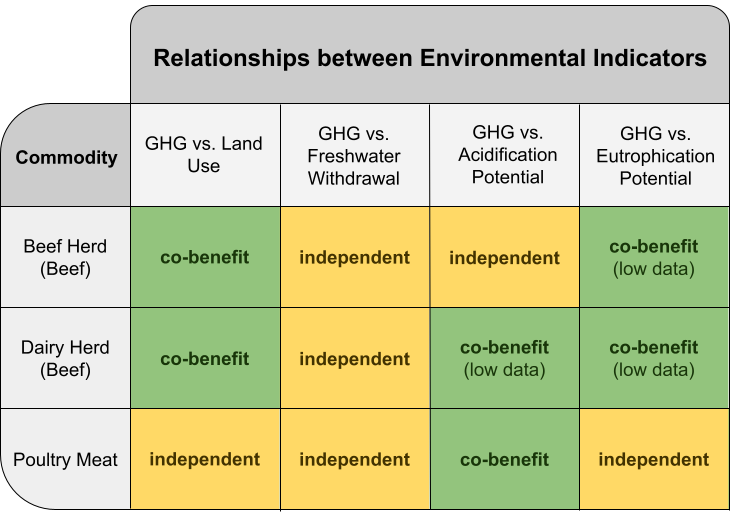
In the past 50 years, global annual meat consumption has risen from an average of 10 kilograms per person in 1960, to 26 kilograms in 2000, and to 41.3 kilograms in 2015., This average is expected to continue to increase as the global middle class grows over the next century. Meat also contributes 14.5% of global human-caused GHG emissions. The subcategory of livestock contains beef and poultry meats, which the team chose because cattle are representative of ruminants (meaning they have multiple stomachs), and poultry broadly covers both farmed bird meat, and other monogastrics (which only have one stomach). In general, there seem to be few trade-offs between GHG emissions and other environmental indicators for livestock. Correlations are generally either positive, implying that decreased GHG emissions are also connected to a decrease in other environmental impacts, or neutral, which indicates a lack of relationship between GHG emissions and the given environmental indicator. This suggests that pursuing systems which minimize GHG emissions in livestock production systems does not come with a consistent cost of increased environmental impacts.



